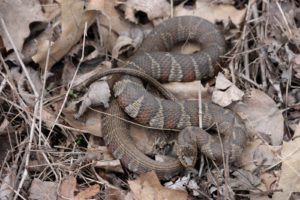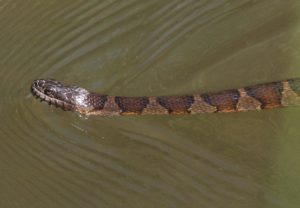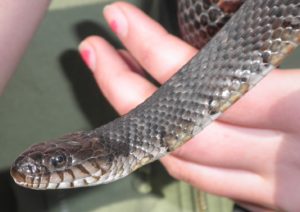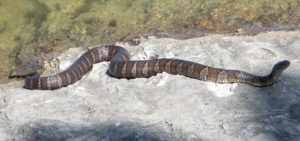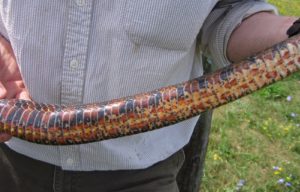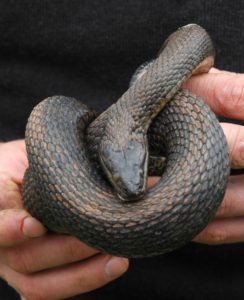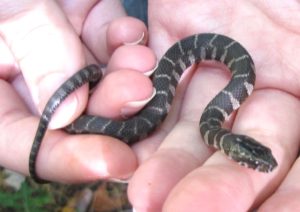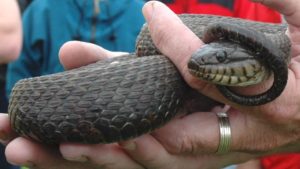Nerodia sipedon
Identification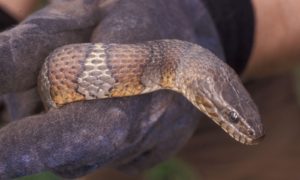
When young, the Common Watersnake has reddish-brown blotches on a cream background. They darken with age to almost solid black or brown with dark brown blotches. They have dark vertical stripes on their lips. Their underside is glossy smooth and beautifully marked with red crescents on a white or yellow background. Watersnakes are thick-bodied snakes with heavily keeled scales. Adults are usually 3-4 feet long (the longest documented in Vermont is 52 inches). If caught and handled this snake is likely to defend itself but they are not aggressive if left alone. They are curious though, and this behavior is often misunderstood and unnecessarily feared.
Get more detailed identification and life history information by downloading the chart here.
You can learn more about this species and see some video footage by checking out this clip from our Rattlers, Peepers & Snappers DVD.
Range/Habitat
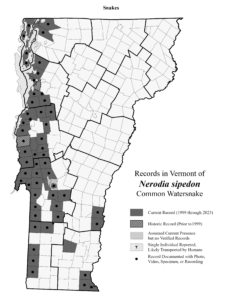
[ click image to zoom | download printable PDF ]

[ click image to zoom | download printable PDF ]
Common Watersnakes inhabit lowland shallow wetlands with emergent vegetation and nearby rocks. They are primarily found near marshes with rocky shores at low elevations in the Lake Champlain Basin.
Status
This species has a state natural heritage rank of S3 (uncommon, localized). Please report all sightings of this species in Vermont. Take photos if possible. Even historic sighting information is useful.
Additional Photos
More Info
- Nerodia sipedon at the Animal Diversity website
- Nerodia sipedon sipedon at the Canadian Herpetological Society website
- Nerodia sipedon in the Vermont Agency of Natural Resources’ Wildlife Action Plan: Amphibian & Reptiles (9/25/2015 draft)
- Nerodia sipedon at the Snakes of Massachusetts website
The common name of this snake until 2012 was “Northern Watersnake” but it has now been changed to “Common Watersnake”.
Species summary written by Ariel K. McK. Burgess.

